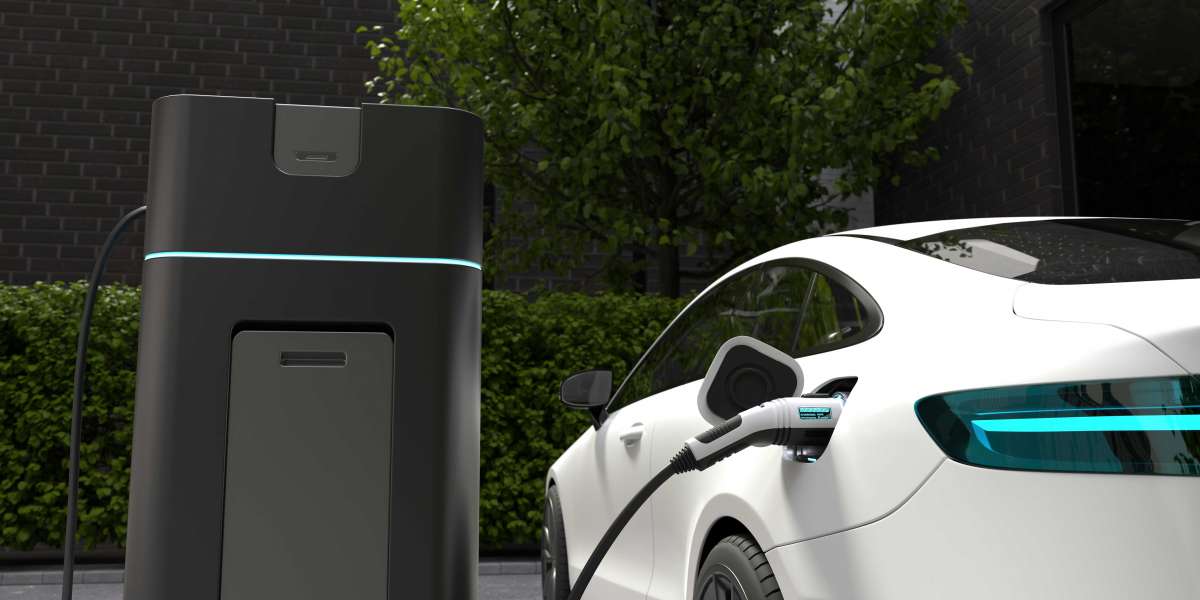As electric vehicles (EVs) continue to surge in popularity, businesses are recognizing the opportunity to cater to this growing market by installing commercial EV chargers. From increasing customer retention to contributing to environmental goals, having EV charging stations at your commercial property has numerous benefits. In this comprehensive guide, we’ll explore what commercial EV chargers are, their types, benefits, installation process, and why it’s a smart move for future-focused businesses.
What is a Commercial EV Charger
A commercial EV charger is a charging station installed at a public or semi-public location, such as shopping centers, office buildings, hotels, parking structures, or fleets. Unlike home chargers, commercial chargers are designed for higher usage, often with faster charging capabilities and multiple charging ports to serve more than one vehicle simultaneously.
These chargers help businesses provide a valuable service to customers, employees, or tenants, encouraging longer visits and boosting brand reputation. They also serve as a key step toward sustainability initiatives and carbon footprint reduction.
Types of Commercial EV Chargers
Level 2 Chargers
Level 2 chargers are the most common type of commercial EV chargers. They use a 240-volt power source and typically deliver 10 to 60 miles of range per hour of charging. They are ideal for locations where vehicles will be parked for at least an hour, such as workplaces or retail centers.
DC Fast Chargers (Level 3)
DC fast chargers provide a much faster charging experience, offering 60 to 80 miles of range in just 20 minutes. These chargers require a higher power supply and are best suited for locations along highways, convenience stores, or anywhere drivers need a quick top-up.
Benefits of Installing a Commercial EV Charger
1. Attract More Customers
EV drivers often plan their routes around charging station availability. By installing a charger, your business becomes a destination, encouraging drivers to stop and spend time (and money) at your location.
2. Increase Dwell Time
With EV charging taking anywhere from 30 minutes to several hours, customers are more likely to explore your premises, shop, dine, or utilize other services while they wait.
3. Enhance Brand Image
Offering eco-friendly amenities positions your business as a forward-thinking, environmentally conscious brand. It’s a powerful way to demonstrate corporate social responsibility and align with the values of today’s consumers.
4. Generate Additional Revenue
Many commercial EV chargers can be monetized by charging a fee for usage. In addition, some businesses report increased sales as a secondary benefit due to increased foot traffic.
5. Take Advantage of Incentives
Depending on your location, there are numerous federal, state, and local incentives available to help offset the cost of purchasing and installing EV charging stations. These can include tax credits, rebates, and grants.
Key Considerations Before Installing
Location and Accessibility
Choosing the right location on your property is crucial. Chargers should be easily accessible, well-lit, and clearly marked. Proximity to electrical infrastructure can also affect installation costs.
Power Requirements
Ensure your building’s electrical system can handle the added load of EV chargers. An electrician or energy consultant can evaluate your system and determine if upgrades are necessary.
Usage Patterns
Consider who will use the charger — employees, customers, tenants, or fleet drivers. This will help you choose the right type and quantity of chargers, as well as inform your pricing model.
Networked vs. Non-Networked Chargers
Networked chargers offer benefits like usage tracking, remote monitoring, and payment processing. While more expensive upfront, they offer greater control and flexibility over time.
Installation Process
Installing a commercial EV charger typically involves the following steps:
Site Assessment – Evaluate location, power supply, and traffic patterns.
Charger Selection – Choose the right type of charger based on your needs and budget.
Permits and Approvals – Secure necessary permits from local authorities.
Installation – A certified electrician installs and tests the equipment.
Activation and Maintenance – Activate the network and set up monitoring and billing, if applicable.
Long-Term Maintenance and Support
Just like any other commercial equipment, EV chargers require periodic maintenance to ensure optimal performance. Choose a provider that offers reliable customer support, software updates, and regular servicing. Some companies also offer extended warranties and service plans for peace of mind.
FAQs About Commercial EV Chargers
1. How long does it take to install a commercial EV charger?
The installation process can take anywhere from a few days to a few weeks, depending on the complexity of the project, site preparation needs, and permitting processes. A standard Level 2 charger is generally quicker to install than a DC fast charger.
2. Can I set pricing for my commercial EV charger?
Yes, if you opt for a networked EV charging solution, you can configure pricing structures such as pay-per-use, subscription, or time-based fees. You can also choose to offer charging for free as a value-added service.
3. Are commercial EV chargers compatible with all EVs?
Most commercial EV chargers are compatible with all major electric vehicle models. However, DC fast chargers may have different connectors (e.g., CHAdeMO, CCS), so it's important to offer multiple connector options or universal compatibility.
Partner with Green Integrations Inc.
At Green Integrations Inc., we specialize in providing businesses with sustainable energy solutions — including high-quality commercial EV charger installations. From consultation to installation and long-term support, we make the process seamless and cost-effective. Whether you’re looking to serve your customers better, support your employees, or lead the way in eco-innovation, we’re here to help.
Ready to install a commercial EV charger at your business? Contact Green Integrations Inc. today and take the next step toward a greener, smarter future.







